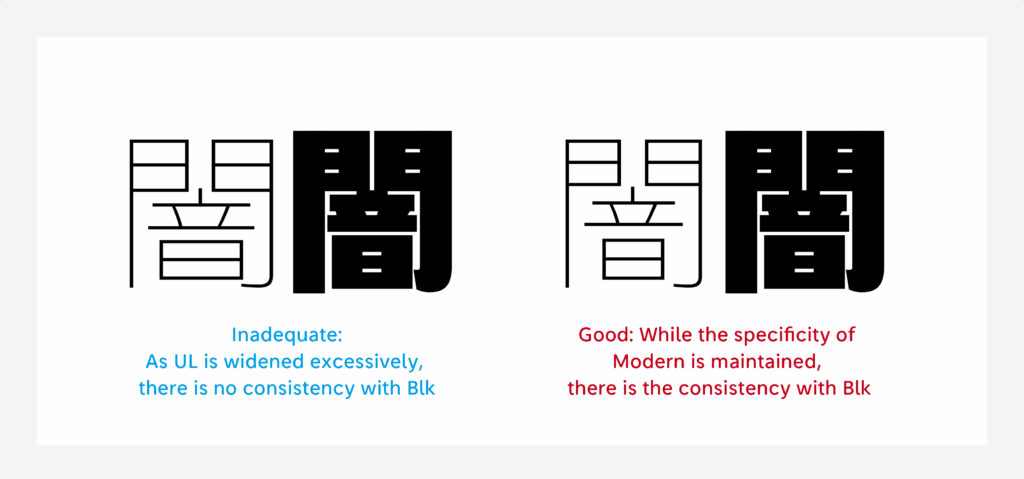After TP Sky Modern Blk, I participated in the creation of UL. As I shifted suddenly to the extremely thin UL from a thickness that covered the screen in inky black, I remember that my hands stopped when I began to create the first character, as if I had forgotten how to create characters.
In contrast to Black, in which there were a lot of work in adjusting the black color, I needed to become more aware of the balance of the structure when creating UL. Due to the absence of thickness in the character, the structure is in the condition to be reflected as it is. This left me more worried about the shape of the character.
The consistency with Black is another important point. To be extreme, the structure can be widened endlessly in UL. However, a consistency with Black must still be obtained.

In kanji characters with many strokes in Black in particular, there is a limit to widening the structure and maintaining space. UL alone cannot be widened excessively, or being pulled too far towards Black, which may not result in UL with the specificities of Modern. To avoid creating kanji with the thinness of UL and space alone, consistency is maintained by always putting the kanji in Black next to it.
The extremely thick Black and the extremely thin UL are arranged in this way. From here, the creation of the intermediate weight begins.
Needless to say, the adjustment of thickness is also necessary in the intermediate weight Bold. It takes work to fully mobilize the points seen in both Black and UL, such as the structure with the features of Modern, the appropriate thickness per character, arrangement of the black color at the time of typesetting, etc. As the already created Black and UL are used as indicators, there are not many places where I became lost. I was able to proceed with an intermediate weight that expresses the qualities of TP Sky Modern.
(NM)
term